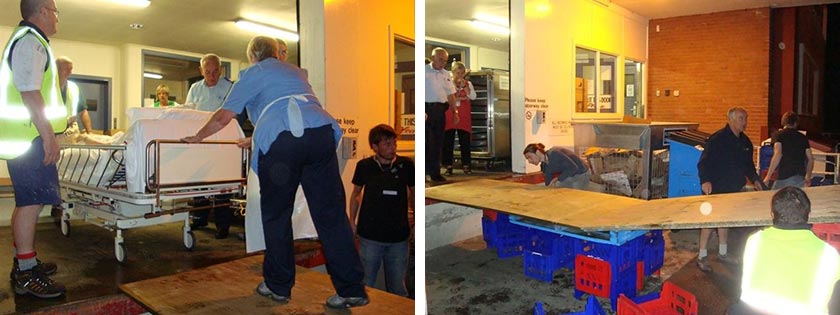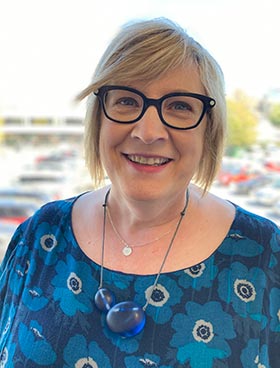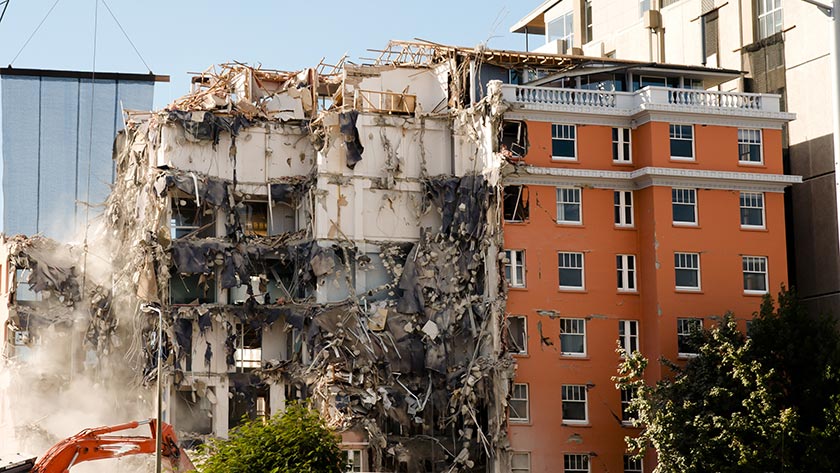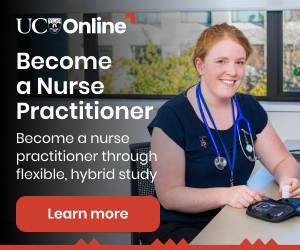The events of February 22, 2011, are seared into the memory of all nurses throughout the Canterbury health system.
For Canterbury District Health Board’s (CDHB) current acting executive director of nursing (EDoN), Becky Hickmott, the memories and images of that day remain vivid. She and some colleagues were visiting the West Coast DHB when she received a stark message from the EDoN Mary Gordon, delivered by her personal assistant: “People have died; come back immediately.”
The trip back over the Southern Alps, knowing of the devastation but not knowing if their families were okay, was “an awful thing”. They arrived at The Princess Margaret Hospital (TPMH) around 6pm, first witnessing the mass exodus from the city centre and then the damage that had been wrought on the TPMH buildings. Walls and floors had cracked, light was coming through the walls, filing cabinets had been flung to the floor. “When we arrived, people were everywhere, builders were trying to stabilise the building but there was an odd sense of calm and control,” she said.
Hickmott, along with so many others, worked through that night. Patients were evacuated to TPMH to make way for the incoming injured from the devastated city, as well as patients cleared from the badly damaged Riverside wards at Christchurch Hospital. An image from that night – of furniture trucks loaded with evacuated patients – brought home to her the extent of the devastation.
‘We had to build makeshift ramps of milk cartons and plywood to unload the patients. When the backs of the trucks were opened, the image of nurses with headlamps quietly and calmly reassuring those patients was really powerful. It was a traumatic experience for those patients.’
“At first, I was shocked not to see ambulances, but they were all dealing with the massive impact of the earthquake in the city centre. The furniture trucks full of patients couldn’t fit under the eaves so the patients could not be unloaded directly. “We had to build makeshift ramps of milk cartons and plywood to unload the patients. When the backs of the trucks were opened, the image of nurses with headlamps quietly and calmly reassuring those patients was really powerful. It was a traumatic experience for those patients.”

The next night saw Hickmott working at the Civil Defence operations centre at the Art Gallery as a health liaison co-ordinator, helping triage the high number of requests coming in as rescuers went through damaged neighbourhoods. She praises those community nurses who, with their backpacks of equipment, ventured out to care for their most vulnerable patients. Hickmott also acknowledged how primary health staff managed to reopen 79 per cent of general practices within days, in spite of the damage.
Over the following weeks, Hickmott was closely involved with assisting aged residential care (ARC) facilities, many of which had been severely damaged, to track and repatriate their residents who had been evacuated. “More than 500 elderly and disabled people were displaced – 285 were accommodated in other facilities and 300 had to go to other regions.”
The decision to transfer 300 elderly patients to other regions had to be made quickly because of the continuing aftershocks and “we didn’t know what might be coming”.
She well remembers the declaration by her colleague Kathy Peri in the days after the earthquake, that the situation was “not going to be another Hurricane Katrina”. In that 2005 disaster, centred on New Orleans and in which 1800 people died, hundreds of elderly in residential care were virtually abandoned.
‘This is not going to be another Hurricane Katrina’ became our rallying cry – the elderly were going to be prioritised.
Long-term impacts

The earthquakes have had a long-term impact on care provision. The Community Rehabilitation Enablement and Support Team (CREST) was established in April 2011, originally to ease pressure on hospitals after the earthquakes and facilitate early discharge. It has since been extended and now accepts referrals directly from general practice and provides older people with care and support in their homes, and reduces avoidable hospital admissions.
Another aspect of the ongoing impacts on health care in Canterbury, is that the the DHB is working more closely with ARC. Gerontology nurse specialists support ARC staff to manage complex residents, fostering a much closer working relationships between the DHB and ARC facilities than before the earthquakes, Hickmott said.
Reflecting on the impact of those events a decade on, Hickmott said staff had become more “solutions-focused. We had to make decisions and come up with solutions very quickly. That has made us more nimble in responding to the mosque shootings, the Whakaari/White Island eruption and COVID-19. We’ve been able to jump to attention when we’ve had to. I’m not saying everything is perfect but we learned a great deal through the earthquakes and have become more creative,” she said.
Another enduring impact is that the immediacy and scale of events broke down silos – “we needed each other to survive”.
That led to relationships developing and strengthening across the health sector and with other response agencies. And those strengthened relationships have been maintained. “We now have more of a ‘do with’ rather than ‘do to’ approach and stronger and more trusting relationships have evolved.”
She praised mental health services’ work to become more flexible and responsive in the aftermath of the earthquakes, which had borne fruit following the impacts of the mosque shootings and COVID-19. Hickmott said what the service learnt was that there could be a lull in the immediate aftermath of such traumatic events – “the needs come later” – so mental health services were always looking ahead to patient flow.
All services have become used to spikes in demand and how to provide the best and most effective care in those circumstances. “Many nurses now work at the top of their scope to support more complex cohorts of patients.”
Hickmott said the earthquakes fostered a “get on and do it” mentality among staff and there was now a real willingness to include “wider thinking in how to respond to events”.
And she paid tribute to the EDoN at the time of the earthquakes. “Mary [Gordon] was the incident controller on the day and showed incredible leadership. There were significant pressures and she remained calm, firm and clear. She was described as the ‘Winston Churchill’ of nursing and guided us all and demonstrated how vital strong leadership is in such situations”.
Ongoing upheaval
Hickmott also acknowledged the work of all nursing and other health-care staff, at that time, and subsequently. “Some staff have had profound shifts in their working lives, moving workplaces three times since the earthquakes, as buildings were repaired. Others have had to deal with similar upheaval in their personal lives and a proportion of staff are still dealing with earthquake repairs – that is so hard.”
It is hardly surprising, then, that there is ongoing high sick leave at the DHB. “All the events staff have had to deal with over the last decade have had a cumulative effect. We are still on a journey on how we can continue to best support our staff,” she said.
“We have been through a decade of significant pressures and change and it has been really tough. But we have dedicated teams of people across the health system who have a strong sense of loyalty to the Canterbury health system and just keep turning up to work, no matter what. I want to acknowledge those amazing teams who are working so hard. I can’t say we’ve got it completely right; we are still working on ways to help.”
Teams across CDHB were able to choose how they would commemorate the 10-year anniversary. “Most chose to observe a minute’s silence at 12.51pm in common areas. Others went down to the river where flowers were provided. It was important to take the time to remember, to reflect.
“Everybody knows somebody deeply affected by the earthquake. A significant number of nurses died in the earthquake, many from overseas, and it is important to remember them too.”
Hickmott described nurses in their responses then and now as “boundary spanners”, ie able to innovate, communicate, connect and problem solve, all while managing patients’ needs.
“They were and continue to be pretty phenomenal in working for the best outcomes for patients. But nurses everywhere would have done the same.”
But Canterbury nurses have been severely tested in some exceptional circumstances over the last decade. Thankfully, most nurses have not endured such challenges. We salute our Canterbury colleagues.




